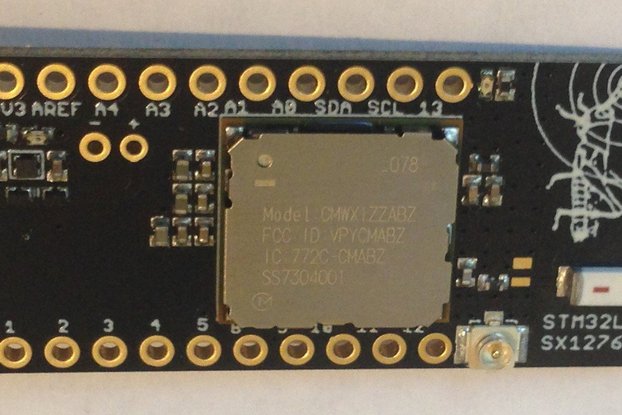Low Power Wireless Internet of Things AVR development board
Designed by elfTronics in United States of America
Buy with confidence.
Our Tindie Guarantee protects your purchase from fraud. Learn More
What is it? This is a PCB breakout board based upon the ATMEga256RFR2 microcontroller with integrated radio. It can be used as the basis for low-power wireless projects that run on batteries for rem…
Read More…This is a PCB breakout board based upon the ATMEga256RFR2 microcontroller with integrated radio. It can be used as the basis for low-power wireless projects that run on batteries for remote operation, or a wired power supply.
I designed these wireless boards for an event involving LED stips inside luminaries in a parade. They worked well enough, and low power wireless is becoming popular enough, that I thought it would make a great development board for people who want to explore building their own endpoints for the Internet of Things. The radio on this chip does 802.15.4, the base protocol for Zigbee, Z-Wave, and some Contiki implementations. The CPU part of the ATMega256RFR2 is an 8-bit AVR with 256KB program memory.
Feed it 4.5VDC - 9VDC through the mini-USB connector and program it through the 6-pin ISP connector or via the TTL-level serial port and you've got a nice little dev board. Easy to power with inexpensive power supplies like those for charging cell phones, and runs for a long time. You can also power it from batteries within that voltage range because it has a 3.3V low-dropout regulator onboard. One power LED, three indicator LEDs, analog port, JTAG port, digital I/O port, interrupt port, I2C port, TTL serial port, and a special port for driving 5VDC RGB LED strips are all provided on the board edges with standard 0.1 in pin spacing. A PCB antenna is built onto the board, so it's completely self-contained. Not all pins are brought out to connectors, but the most important ones that fit within a 50mm square board are available.
This board can be programmed through the Arduino IDE using a USB-TTL converter board with some file updates to the Arduino IDE installation (as for any new board), but nothing weird. There isn't currently an Arduino library for the radio functions on the chip, so you would need to provide those. However, if you use Atmel Studio, there is a free library you can download.
Note that this does NOT have a USB port onboard: the USB connector is only for power to the board. To program through the serial interface you will need a USB-TTL serial converter.
No country selected, please select your country to see shipping options.
No rates are available for shipping to .
Enter your email address if you'd like to be notified when ATMega256RFR2 Breakout Board for 802.15.4 Wireless can be shipped to you:
Thanks! We'll let you know when the seller adds shipping rates for your country.
| Shipping Rate | Tracked | Ships From | First Item | Additional Items |
|---|---|---|---|---|
|
:
|
Buy with confidence.
Our Tindie Guarantee protects your purchase from fraud. Learn More
West Bloomfield, MI, United States of America
Ships from United States of America.

$35.49
Free Shipping!

$39.95
Free Shipping!

$19.99
Free Shipping!

$7.50
Free Shipping!
By clicking Register, you confirm that you accept our Terms & Conditions
We recognize our top users by making them a Tindarian. Tindarians have access to secret & unreleased features.
We look for the most active & best members of the Tindie community, and invite them to join. There isn't a selection process or form to fill out. The only way to become a Tindarian is by being a nice & active member of the Tindie community!
